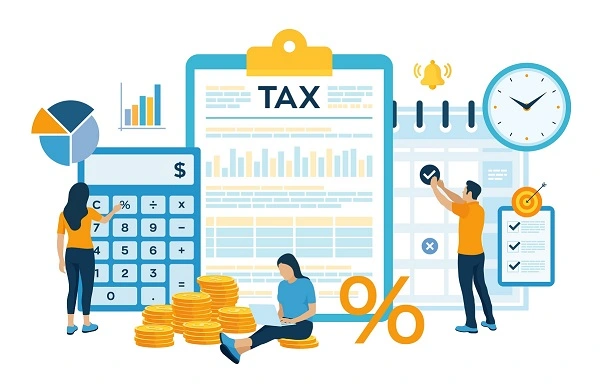-
By laura
- In Uncategorized
VAT in the UK, what is it for?
VAT in the UK, what is it for? Value Added Tax is one of the most important taxes in the UK. It also plays a fundamental role in the UK economy. In this article we will explain what VAT is in the UK, how it works, and why it is so important for both consumers and businesses.

What is VAT?
VAT is an indirect tax levied on goods and services in the UK. Its main purpose is to tax consumption rather than income or wealth. This tax is levied at each stage of the supply chain, from the producer to the final retailer. In addition, each time the value of the product or service increases in the production or distribution process, a percentage of VAT is added to it.
VAT rates in the UK
In the UK, VAT is classified into different types, depending on the product or service. The three main types of VAT are:
1- Standard rate: This is the main rate of VAT and applies to most goods and services. From 2021 this rate is 20%.
2- Reduced rate: This lower rate applies to certain goods and services, such as domestic electricity, heating, water supplies and some household products. The reduced rate is 5%.
3- Zero rate: Some goods and services are exempt from the standard rate, but are still subject to VAT, albeit at a rate of 0%. These include basic foodstuffs, clothing, books, newspapers and certain transport services.
In addition to these types, there are goods and services that are exempt from VAT, such as medical, educational or financial services, and some housing-related services.
How does VAT work?
VAT is levied on the sale price of goods and services, and is generally paid by the final consumer. However, businesses also play a key role in this process, as they are responsible for collecting the tax and remitting it to HM Revenue and Customs (HMRC).
The operation of VAT is based on the principle of the ‘value chain’. Every time a business buys goods and services, it pays VAT on them. Then, when the business sells these goods or services, it charges VAT to its customers. The difference between the VAT charged on sales and the VAT paid on purchases is paid to HMRC.
VAT exemptions and thresholds
Some businesses are exempt from registering for VAT. This occurs when a company’s level of sales is below a certain annual threshold (in the UK, for 2025 is £90,000). Small businesses earning less than that amount do not have to register for VAT. However they can also choose to do so, as registration allows them to reclaim the VAT they paid on their purchases.
In some cases, certain goods and services may be completely exempt from VAT. This includes most health services, education, financial services, property rental and more. Businesses that deal exclusively in these services do not have to charge VAT and cannot reclaim the tax paid on their purchases.
Importance of VAT in the UK economy
VAT is a key source of revenue for the UK government. It accounts for a significant portion of national tax revenues and it is estimated that around 20% of UK tax revenues come from VAT.
This indirect tax system has several advantages. Firstly, it is relatively easy for the government to administer, as businesses are responsible for collecting and remitting the tax.
In addition, VAT is less prone to tax evasion, as the chain tax system creates a form of automatic control in which each link in the supply chain is obliged to pay the tax.